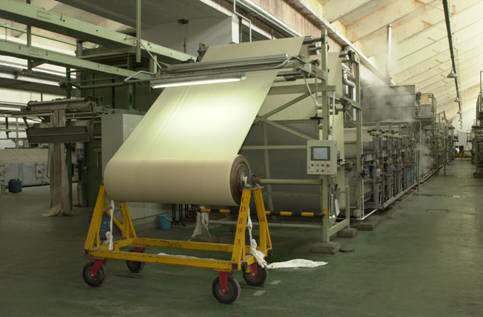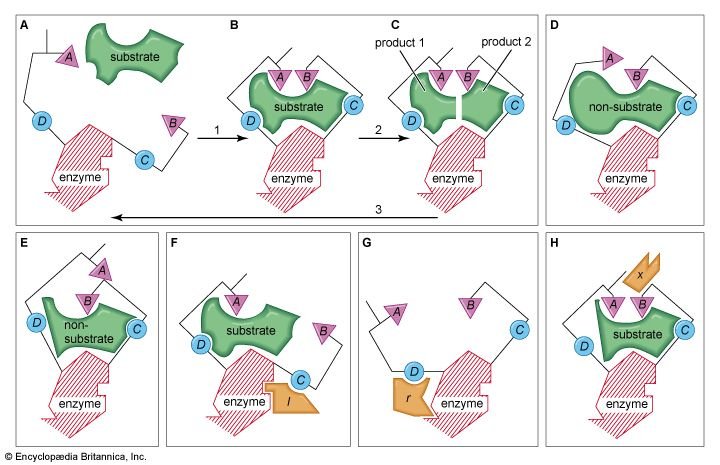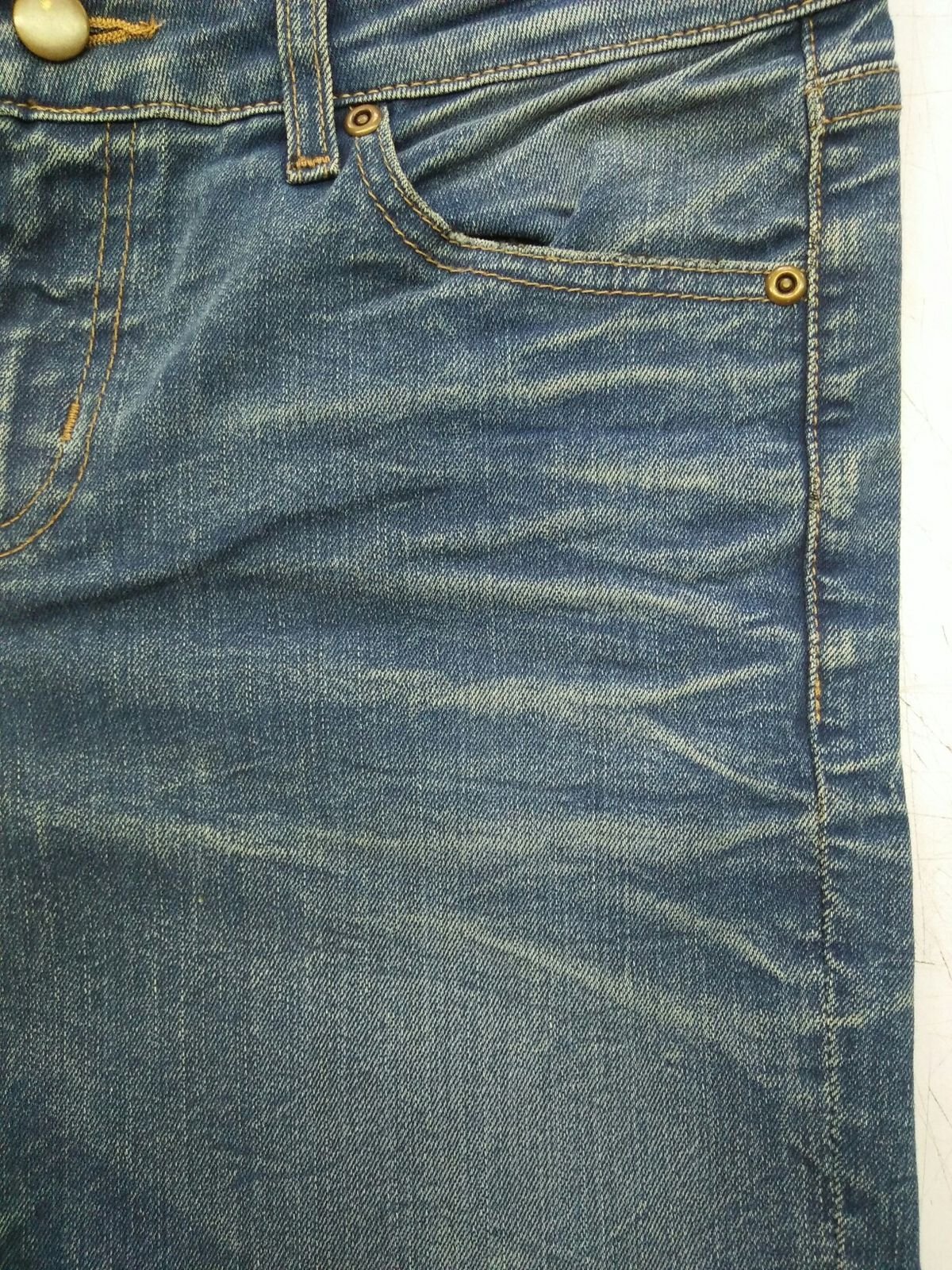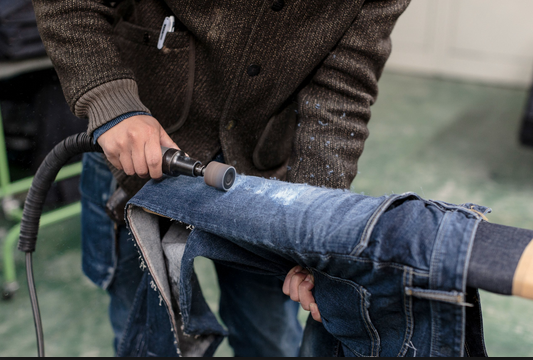Comprehensive Guide to Textile Processing and Finishing Techniques

Estimated Reading Time:~4 minutes
Introduction
Textile processing and finishing represent fundamental operations which transform raw fabric materials into completed garments that meet both design requirements and operational standards. The fabric undergoes various treatments which improve its color and texture and durability and appearance qualities. The final product requires each critical step from desizing through dyeing and softening and whisker and hole creation to achieve its desired quality.
This article examines different textile processing and finishing methods along with their industrial applications in garment production.
Pre-treatment Processes
Desizing
-
Description: The sizing material used to protect yarns during weaving gets eliminated through the desizing process.
-
Importance: The process enables fabric preparation for additional manufacturing steps by improving dye absorption and finish receptivity.

Desizing
Rinsing
-
Description: The fabric undergoes water washing for removing all remaining chemicals and impurities following various treatment procedures.
-
Importance: The process cleans the fabric so it becomes suitable for the following stage while eliminating all interfering materials.
Enzyme Washing
-
Description: Enzyme-based processing breaks down fabric impurities and softens the material primarily during denim processing.
-
Importance: The process delivers both gentle effectiveness and a worn appearance through chemical-free methods.

Enzyme
Dyeing and Coloration
Bleaching
-
Description: The fabric becomes white through the application of bleaching agents including hydrogen peroxide or sodium hypochlorite.
-
Importance: The fabric preparation for dyeing starts with bleaching which removes natural colors together with impurities.
Neutralization
-
Description: The fabric pH needs adjustment following bleaching operations to eliminate remaining chemical residues.
-
Importance: The fabric requires this step to protect itself from damage while becoming ready for dyeing operations.
Peroxide Cleaning
-
Description: The cleaning and bleaching process utilizes hydrogen peroxide specifically in environmentally friendly production methods.
-
Importance: Offers a sustainable alternative to traditional bleaching methods.
Acid Washing
-
Description: The application of acid results in faded or distressed appearances on denim fabric.
-
Importance: The technique enables manufacturers to achieve aged or damaged textures in jeans.

ECO Bleaching
-
Description: The bleaching process uses environmentally friendly methods that reduce water consumption together with chemical requirements.
-
Importance: Promotes sustainability in textile processing.
Finishing Processes
Softening
-
Description: Applies chemicals or mechanical processes to make the fabric softer and more comfortable.
-
Importance: Enhances the tactile feel of the garment, making it more appealing to consumers.
Drying
-
Description: Removes moisture from the fabric after wet processing.
-
Importance: Prepares the fabric for the next step or for packaging.
Resin Application
-
Description: Applies resin to the fabric to improve its properties like water resistance or durability.
-
Importance: Adds functional benefits to the fabric, making it suitable for various applications.
Special Effects
Whiskers ( 3D Whiskers, Free Knee Whiske, Back knee Whiskers)
-
Description: Creates faded lines or patterns on denim to simulate wear and tear.
-
Importance: Adds a distressed, vintage look to jeans, which is highly fashionable.

Chevrons
-
Description: Creates arrow-like patterns on fabrics, often on the inner side.
-
Importance: Adds unique design elements to garments.
Destruction Holes
-
Description: Intentionally creates holes or tears in the fabric.
-
Importance: Popular in fashion for creating edgy, distressed looks.
Grinding ( Handgrind)
-
Description: Uses abrasive tools to wear down the fabric, creating a distressed effect.
-
Importance: Achieves a worn-out appearance without using chemicals.

Packaging and Labeling
Mesh Bags (Put into Mesh bag)
-
Description: Places garments into mesh bags for washing or processing.
-
Importance: Protects garments during washing and ensures they are handled properly.
Tying Panels (Tie up panels)
-
Description: Ties sections of fabric together, possibly for dyeing or printing.
-
Importance: Helps in achieving uniform dyeing or printing results.
Attaching Tags (Dennison tags)
-
Description: Attaches adhesive tags or labels to garments for branding or care instructions.
-
Importance: Provides necessary information to consumers and adds a professional touch to the product.
Conclusion
Garment manufacturing requires detailed textile processing and finishing operations which form its critical foundation. The production process includes desizing and ending with tag attachment to create a product with its final quality and marketable features. All personnel working in the textile industry need to comprehend these manufacturing processes because they determine both product quality and final appearance. Learning these methods allows one to develop garments that blend attractiveness with practicality and environmental responsibility.
This guide includes detailed information about fundamental textile processing techniques and finishing methods which are crucial for the garment industry. Understanding these textile concepts enables anyone interested in textiles to recognize the intricate processes that transform raw materials into the daily clothes we wear.
Customization Services by LYDENIM
🎨 Want custom denim fabrics or unique custom denim garment? LYDENIM specializes in tailor-made solutions to meet your design and production needs.
🛍️ Explore & Get Inspired: Browse our fabric selections and discover design ideas on LYDenim.
🌐 Elastic Clothing: Check out our offerings on MyAlibaba. 📩 Contact Us: Reach out at malone@lydenim.com.
Create your denim masterpiece with LYDENIM—your trusted partner for stretch fabric and custom denim solutions.
